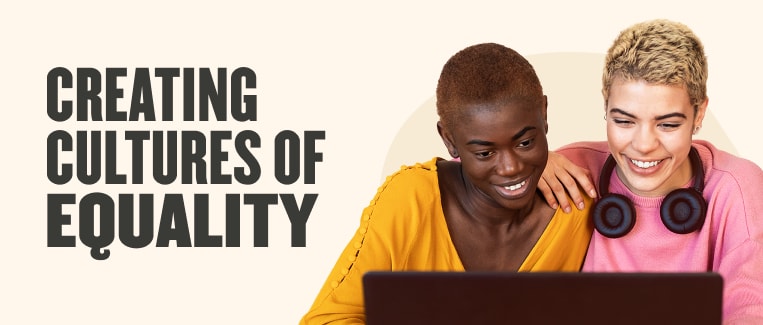Let’s start with the good news. The fight for gender equity and equality is making progress worldwide. According to research we conducted last month on women’s equality, the majority of women across the US, UK, and Australia:
- Feel comfortable at work and have never been made to feel less qualified because they’re women
- Were promoted or received a bump in pay and benefits in 2021
- Receive women-specific benefits from their companies
Our research also showed that most women are confident in their professional performance and feel they’re promoted equally compared to men. And while we’re on the subject: A full 48 percent of women in these three countries believe they’re paid equally to men. Considering where we were five years ago, we’ve made great progress towards achieving gender equity and equality in the workplace. We’ve definitely come a long way, but we still have a long way to go.
The 2021 World Economic Gender Gap Report shows that 58 percent of the Economic Participation and Opportunity gap “has been closed so far,” and women still hold only 27 percent of manager positions.
To achieve lasting gender equity and equality, organizations can try on a few progressive ideas for size to help create truly diverse and inclusive work cultures:
1. Invest in an inclusive culture
If we’ve learned anything from the past two years, it’s that company culture matters when it comes to keeping and attracting the best people. That includes men, women, and people across the gender spectrum. Culture is essential to helping people thrive–and businesses succeed best when they have cultures built on diversity and inclusion.
Remember, when groups of diverse people get together, they bring a “diversity of thought” to the table. Diversity of thought can be a company’s greatest competitive advantage because it encourages more innovation and creativity. Everyone benefits when companies find and hire forward-thinking people–no matter their gender–with the potential to be great leaders. Welcoming them onto the team also helps create an inclusive and encouraging environment that enables more people to advance.
2. Commit to C-level gender diversity
Despite the strides we’ve made, it’s easy to feel frustrated about the state of women and non-binary people in the workplace.
But, it’s not all doom and gloom. Some recent studies show that organizations are more likely to hire more women leaders when there are already women in leadership positions. Strong, independent, women leaders crush gender stereotypes. When people see these women role models in action, they can start imagining themselves (if they’re women) and other women in similar roles.
Women and other role models from across the gender spectrum can help break gender stereotypes. If organizations are serious about diversity, they must start hiring and promoting team members from across the gender spectrum.
3. Equalize the bottom line
Gender-based discrimination is still a stubborn reality. In today’s new world of work, we know that people do their best when they have the flexibility to work where and when they choose. Their productivity isn’t tied to location or the traditional 9:00-to-5:00 workday. Unfortunately, women and non-binary individuals have suffered more than others from conventional work structures.
To help create a culture of equity and equality, companies can commit to equal pay for equal work, childcare options, flexible hours, and mentoring programs to promote equity and equality and boost their bottom lines. These four benefits should be part and parcel of the values and goals of every company that’s serious about chucking gender-related bias into the trash bin of history.
Recommended For Further Reading
4. Eliminate double standards
Facebook COO Sheryl Sandberg has said that women in the workplace often have to deal with something she calls a “likeability penalty.” This double standard expects women leaders to be nurturing and warm, while men leaders are allowed to be confident and self-assured. The moment a woman in a position of power asserts herself, people are likely to view her as difficult, rude, or aggressive.
Research shows that LGBTQ+ professionals experience even more biases and stereotypes at work and may avoid certain professions because of them. In many cases, people aren’t even aware of their biases. A key way for people to check themselves against unconscious bias is to ask: Would I feel this way if a cisgender man or woman did the same thing? Privately admitting our own biases is one of the best ways to combat inequality and inequity and help create a more inclusive and supportive workplace.
Celebrate diversity and inclusion every day
There’s a ton to celebrate. Over the past few years, we’ve taken great leaps in the right direction: Most women feel comfortable and confident at work and almost half feel their pay is equal to men’s. More and more companies are providing women-specific benefits to help families divide childcare responsibilities evenly, and most importantly, people are openly tackling DE&I issues head-on.
Of course, there’s still a lot of work to be done. But, as long as we keep moving in the right direction, talking through the challenges, and recognizing gender inequality, we can work together to build a solid and diverse gender-inclusive workforce and make gender equity and equality a reality for everyone.


